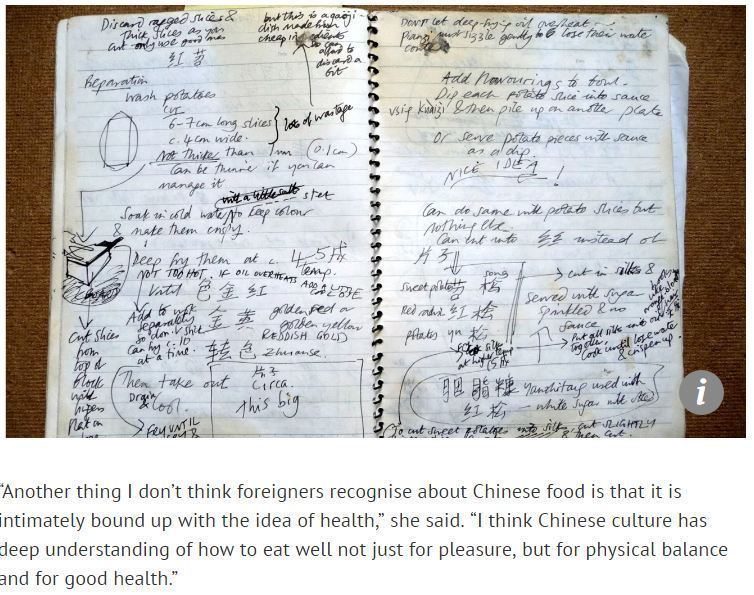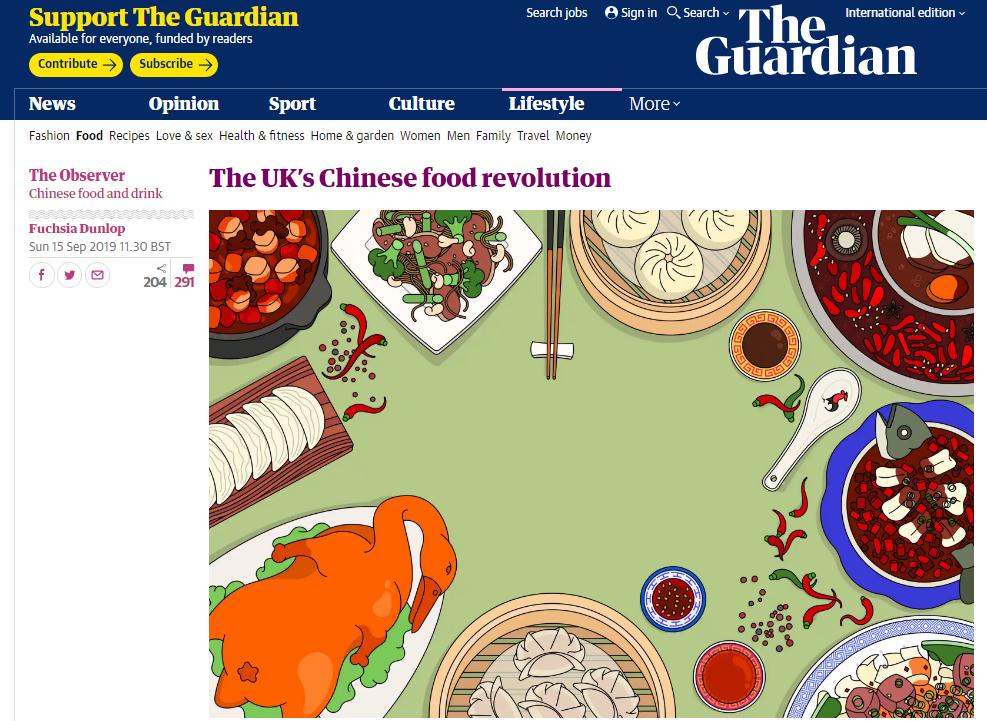This is the heart of China people."Land of Abundance"
For more than 2000 years, the city site has not moved and the city name has not changed.
"Jinguan City" and "Furong City"
It is a beautiful nickname given to her by years.

here isthe ancient sichuan civilizationAn important birthplace of
There are those who yearn for flying."Sun God Bird"
There are ancient "super projects"Dujiangyan irrigation system
There are extreme landscapes here.
summerThere is "everything in changxiajiang village is quiet"
winterThere is a "window with snow in Xiling"
This is a place where people can eat their fill."Food Capital of the World"
Hot pot, maocai, boiled fish.
here is"The happiest city"
Naive and naivepanda Waiting for your love
this isChengdu
"Bashide board"!(Chengdu dialect means "very comfortable")

△ Chengdu scenery
01
The most unique
Happiness in ChengduIt is "ancestral"
Chengdu, SichuanLocated in the west of Sichuan Basin and the hinterland of Chengdu Plain. Chengdu Plain is surrounded by mountains, protected by snow-capped mountains, and surrounded by Longmen Mountain and Longquan Mountain, forming a pattern of "two mountains with one original".

△ Longquan Mountain
The huge vertical height difference in Chengdu makes one-third of the city area plain, one-third hilly and one-third high mountain, which is rare in the world.Overlooking the 5,000-meter mountain.A city with a population of 10 million.

△ When the weather is clear, you can be in the same frame as many snow-capped mountains in Chengdu: Gongga Mountain, the "king of the hill of Shu" at an altitude of 7556 meters, Momei Peak of Siguniang Mountain at an altitude of 6250 meters, and the first peak in Chengdu at an altitude of 5353 meters.
Because the uplift of the Qinghai-Tibet Plateau has changed the pattern of water and heat, the Chengdu Plain is wet and rainy, making it a paradise suitable for human habitation.

△ Qingcheng Mountain and Siguniang Mountain Yaomei Peak are in the same frame.
The affluence of Chengdu Plain also benefits fromMin and Tuo RiversNourishing. When the glaciers on the snow-capped mountains melt and converge into streams, the river is wrapped with sediment and gravel, and it is deposited into a thick and open plain with dense water network in front of the mountain.

△ Chengdu Plain

The first highland to recede the flood gave birth to the dawn of civilization in Chengdu. Southwest of ChengduBaodun siteBe hailed asThe root of ancient Shu.

△ Baodun Site. 4500 years ago, a tribe migrated to Chengdu Plain and left traces of civilization here.
Later, Jinsha people in the hinterland of Chengdu Plain created a splendid dynasty, which is today’s.Jinsha siteThey use the totem of "the sun is negative" and use gold foil as thin as cicada wings to create a symbol of vitality.Sun Shen niao Jin Shi.

△ The four birds circle the sun with their tails, and they are endless.

△ The symbol of Chinese cultural heritage adopts the gold decorative pattern of Sun God Bird.
In Chengdu, the sign of "Sun God Bird" can be seen everywhere.

△ Dome of Chengdu Jinsha Site Museum Exhibition Hall

△ Tianfu junction

△ Copper Liren of Jinsha Site. The spiral hat ring on the head of the bronze stand is similar to the sun pattern of the "Sun God Bird", symbolizing the radiant sun.
"It takes one year to get together, two years to become a city, and three years to become Chengdu". About 2,300 years ago, the ancient Shu kingdom moved its capital, hence the name Chengdu. For more than 2,000 years, ChengduThe city site has not been moved, and the city name has not been changed.It is unique among the famous historical and cultural cities in China.
However, Chengdu still faces two major problems: the barrier of Qinling MountainRoad occlusion, the flood-ravaged Minjiang RiverFrequent floods.
Legend has it that King Hui of Qin defrauded King Shu of digging Jinniu Road, one of the original Shu roads, with five "Taurus". Since then, the gate of Shu has gradually opened, and the Chengdu Plain has moved from closed to open.
Dujiangyan irrigation system
Li Bing, the prefect of Shu County, shouldered a grand mission and built the "super project" at that time.Dujiangyan irrigation system.

The fish mouth, flying sand weir and treasure bottle mouth built by Li Bing and his son are ingeniously connected, like gold hoops, which lock the moody Minjiang River. Today, Dujiangyan has become one of the oldest, largest and most complete irrigation projects in the world.

△ After the Minjiang River enters the Chengdu Plain through the bottle mouth, it is divided into several rivers, which moistens a large area of the Chengdu Plain.

Chengdu people appreciate Li Bing’s merits and regard him as a protector, and Li Bing’s son is also interpreted as a famous Erlang God in the local area.


△ Fulongguan in Dujiangyan Erwang Temple

△ Yulei Pavilion in Yulei Mountain, Dujiangyan
At this point, the Shu Road is open, and the floods are flat. "Woye is thousands of miles away, and floods and droughts follow people. I don’t know hunger, and there is no famine. The world is called ‘ Tianfu ’ Also. " Rice, hemp, tea, well salt, etc. have become local products.Chengdu has gradually become one of the richest areas in China.By the Han Dynasty, Chengdu was second only to Chang ‘an.National metropolis.

△ Qingcheng Mountain, one of the four famous Taoist mountains in China, is surrounded by undulating peaks and lush trees, enjoying the reputation of "Qingcheng Mountain is quiet in the world".

Wen Weng, the capital of Shu in the Western Han Dynasty, promoted education and talents.buildThe earliest "official school" Wen Weng Shishi.

△ Wen Weng sent young officials to Chang ‘an to study as apprentices and returned as teachers.
The rap art, one of the origins of drama, can be seen in Shu County of Han Dynasty. At that time, Nuo You Bai Opera was very prominent. The drum-beating and rap figurines unearthed in Chengdu, one person indulged in interpretation and smiled, just like the Chengdu people who were optimistic, open-minded and bursting with happiness.

△ Drumming and rap figurines of the Eastern Han Dynasty were unearthed in 1957 in the Hanya Tomb in Tianhui, Chengdu, and are now in the National Museum of China.
Temple of Marquis
Before 1800, Wei, Shu and Wu stood in the balance, and Zhuge Liang, who was resourceful, managed Shu with Chengdu as the center. Walking into Wuhou Temple, you will be integrated into the world of heroes in Shu and Han dynasties, and a picture of the Three Kingdoms will slowly unfold.


△ red wall passageway
Sichuan brocade
In ancient Sichuan, mulberry planting and sericulture were extremely developed. The ancients also called silkworms "Shu", so Sichuan has them again."Shu"Or "the state of Can Cong".
Although Shu Han has the advantages of agriculture in Chengdu Plain, after all, its territory is narrow and its national strength is weak. Prime Minister Zhuge must find a new source of wealth for Shu Han, and a "first-class luxury" enters his field of vision — —"Jin".

△ Shu brocade, a national intangible cultural heritage, is loved by people for its gorgeous appearance and exquisite craftsmanship.
Sichuan Shujin, Suzhou Songjin, Nanjing Yunjin and Guangxi Zhuangjin are also called."Four Famous Brocades in China"Shu brocade ranks first.

△ The raw material of Shu brocade is precious silk, and the production process is complicated.
Being held in ChengduThe 31st Summer Universiade was adopted.Shu brocade weaving technology to make medal ribbons.

△ The main colors of the front and back of the ribbon are blue and red, respectively, which are blended with elements such as hibiscus flowers, sun birds and checkerboard, and reflect different colors under natural light.
During the Shu-Han period, the gorgeous brocade was exported to distant markets, and the Shu-Han government built a government workshop in Chengdu to manage the production of Shu-Jin — — "Jinguan City". Since then, Chengdu has gained a beautiful nickname."Jincheng" or "Jinguan City".
Nowadays, there are still many streets named after the word "Jin" in Chengdu, such as Shuangjin Road, Baijin Road, Shunjin Road and Wangjin Road … … The most famous is the place where the brocade workshop used to be located."Jinli".

△ Jinli Ancient Street. As a part of Wuhou Temple Museum, "Baiwuhou and Paojinli" has become a must-see project in Chengdu.
Sichuan embroidery
Shu embroidery, also known as "Sichuan embroidery", is as famous as Su embroidery, Xiang embroidery and Yue embroidery.One of the four famous embroideries in China., is a traditional process in China in which silk threads are used to embroider patterns on silk or other fabrics.

△ Shu embroidery. Shu embroidery has formed a unique charm with its bright and delicate colors and exquisite stitches.

△ Shu embroidery Sichuan opera mask
In addition to the weaving techniques of Shu embroidery and Shu brocade, Chengdu also has the production techniques of Chengdu Lacquer Art, Chengdu tanghua, Chengdu Yinhua Silk, the traditional brewing techniques of Shuijingfang Liquor, and the traditional production techniques of Pixian watercress, as well as Sichuan dulcimer, Sichuan Qingyin, Sichuan Money Board, Chengdu Taoist music, and Xiling folk songs in Dayi County.national intangible cultural heritage.

△ Chengdu lacquer art

△ Chengdu tanghua
"Chengdu, a city that you don’t want to leave when you come" is also applicable in Sui and Tang Dynasties. At that time, Chengdu, with a population second only to Chang ‘an, was a commercial city in the Yangtze River basin, with many shops and goods all over the world."Yang (Yangzhou) Yi Yi (Chengdu) Er"The statement.
After the Five Dynasties, Chengdu planted hibiscus all over the world, and once again got a beautiful nickname."Furong City" and "Rongcheng", referred to as "Rong".

△ Chengdu Flower Hibiscus

△ Jinjiang Night
Du Fu Thatched Cottage
In turbulent times, Chengdu became a "comfortable place". In order to avoid the Anshi Rebellion, Du Fu took his family from Longyou to Sichuan, built a hut and lived there, saying“Caotang "Here, Du Fu lived for nearly four years, and more than 240 poems have been written so far.




△ Life in Chengdu is a rare quiet time for Du Fu and his family. The phrase "I live in Jinguan City" shows Du Fu’s sense of belonging to Chengdu.
During the Tang and Song Dynasties, iron money was used in Sichuan, which was inconvenient to carry in business. People used paper "Jiaozi" as a voucher for withdrawing money. Later, the court set up "Yizhou Jiaozi Affairs" to issue "Guanjiaozi" and becameThe world’s earliest original paper money.

△ The extension of the old version of Jiaozi in the Northern Song Dynasty. Jiaozi appeared more than 600 years before European paper money.
Chengdu people’s playful character dates back to ancient times.In the Tang Dynasty, Chengdu had"Huan flower tour.Jiang "It continued to flourish until the Song Dynasty, when people held banquets, went boating, swam the river and watched performances. The Song and Yuan Dynasties was the most prosperous period for Chengdu people’s recreational activities, which was known as the "Song and Yuan Dynasties"."Chengdu is the best place to enjoy the tour, and it is in West Shu.".

△ Chengdu Dongmen Wharf Jinjiang water non-legacy performance, shadow play, lion dance, waist drum, etc. are staged in turn.
In the late Yuan Dynasty, the early Ming Dynasty, the late Ming Dynasty and the early Qing Dynasty and the first half of the 20th century, new immigrants from Huguang and other places entered Chengdu on a large scale. New villages and towns have risen rapidly in Chengdu Plain, and Hakka people willtamped earth circular buildingIntroduced to Chengdu; According to the custom of the north, Manchu people set up hutong-like buildings.Kuanzhai laneson.

△ Chengdu Luodai Tulou, built with reference to Fujian Yongding Tulou, restores the spirit of Hakka Tulou.

△ Kuanzhai Lane
Sichuan opera
According to legend, as early as the Tang Dynasty, "Sichuan Opera" had the reputation of "Sichuan Opera is the best in the world", and "Sichuan Zaju" was born in the Song Dynasty. In the Qing Dynasty, the five kinds of vocal art imported from other provinces, namely, Kunqu Opera, Gaoqiang Opera, Huqin Opera (Pihuang), Tanxi Opera and Sichuan Folk Lantern Opera, gradually formed a common style over time. In the late Qing Dynasty, they were collectively called "Sichuan Opera" and later renamed."Sichuan opera".
Sichuan opera has a variety of plays, humorous content, compact rhythm and climax, especially"changing face" and "spitting fire"The stunt is amazing.


shadow play
Sichuan local craftsmen absorb the local colors in Sichuan brocade, Sichuan embroidery, folk paper-cutting and printing and dyeing, makingSichuan shadow playFormed a unique artistic style, singing mainly borrowed from Sichuan Opera’s Five Loud Tunes, in addition to absorbing popular folk songs, minor tunes, Buddhist and Taoist music, which was eclectic and self-contained.

panda
The chubby, lumpy, and forever cute giant panda is irresistible.Giant Panda Breeding Research BaseIt is almost a must for every visitor to Chengdu.









Chengdu people make the lazy and delicate giant panda the "first IP" of wildlife in China, which makes the whole world fall for it.


△ Panda sculpture lying on the roof of IFS


△ "Self-portrait Panda" in Dujiangyan Water Culture Square
02
Enjoy the most
This is the most comfortable city.
Food is the most popular language in Chengdu.The land of abundance has given Chengdu the greatest confidence in eating and drinking, and the cold and humid basin climate has made Chengdu people never return to eat spicy food and hot pot.
cooked wheaten food
Chengdu people love to eat noodles early in the morning, and the bright red oil hides a heavy-mouthed and bold carbon bomb, which makes people can’t help but say: Can you still eat this for breakfast? When I first arrived in Chengdu, the classic pasta I had to taste wasDan Dan Noodles、Sweet water surfaceandSujiao miscellaneous sauce noodles. Among them, Dandan Noodles is the most famous, which is a typical representative of Chengdu pasta going out of Sichuan and towards the whole country.

△ Dandan Noodles
In order to eat more flavors, Chengdu people will buy a variety of noodles at a meal, such as miscellaneous sauce noodles, beef noodles, rabbit noodles, pork liver noodles, or even unique to Chengdu.Sweet water surface.

△ The entrance to the sweet water surface is slightly sweet and chewy, with the fragrance of peanuts and pepper, which is refreshing.
Leaving breakfast, on the streets of Chengdu today, the most delicious food you see is mainlychafing dish、Snack、Sichuan cuisineThree categories.
chafing dish
In Chengdu, you will often hear "Have a bite, it’s really not spicy". "Vegetables are three-thirds of the grain, peppers are clothes", and tens of thousands of hot pot stores in Chengdu will definitely make you find an organization that loves hot pot.
tea-seed oilPure rapeseed oil is selected at the bottom of the pot, which can absorb the fresh hemp of pepper and make people fall in love at first sight.

Different from the Jianghu atmosphere shown by Chongqing hot pot under the dock culture, Sichuan hot pot shows an inclusive and peaceful atmosphere in Chengdu, which is rich in products.

Whether it’s hairy belly, yellow throat, duck blood, goose intestines, crispy meat, brain flowers, fat cows, seafood and vegetables, they can all boil in one pot.

Oil dishThere are many ingredients, such as onion, coriander, millet, oyster sauce and garlic. It is also very common to eat oil dish+dry dish and double dish.
Even all over the streets of ChengduTake foodandSichuan cuisineIt is also a variant of hot pot.

△ maocai

△ hotpot
In Chengdu, some hot pot restaurants are not only restaurants, but also "one-stop service" for entertainment and life: there are noisy teahouses upstairs; There is even a Sichuan opera performance at the table, singing and playing, changing face and spitting fire.
Sichuan cuisine
Sichuan cuisine in Chengdu never disappoints people. Mapo tofu, kung pao chicken, husband and wife lung slices, Dongpo elbow, spicy chicken, saliva chicken … … People from all corners of the country can always find their favorite taste of Chengdu.

△ Husband and wife lung tablets

△ Braised trotters

△ Sichuan style pork

△ Mom’s hoof flower, Sichuan style pork

△ taro chicken

△ sausage
The famous Sichuan cuisine makes people never tire of eating it. Besides the natural combination of pepper and pepper, there is also a great hero, that is.pickled vegetables.
A jar of kimchi with the essence of heaven and earth can be branded as "very Sichuan" with only a small spoonful under the fermentation of time.

Pi County DoubanIt has the characteristics of strong spicy taste, bright red oil, large Chili pieces and sweet aftertaste. It is a common seasoning in Sichuan-style recipes, and its production techniques have been listed in the national intangible cultural heritage list.


△ Bean paste is known as the "soul of Sichuan cuisine"
Snack
Chengdu is a famous "snack paradise". Walking through the streets, you will meet Chengdu snacks head-on: Guo kui, ice powder, mala Tang … …

△ Chengdu snack booth

△ sugar oil fruit

△ Ye Erba

△ Guo kui

△ Sad bean jelly

△ Red Oil Dumplings

△ Three cannons

△ ice powder

△ Snacks Boji
teahouse
Teahouses, like hot pot, are Chengdu’s "food totems". Here, the teahouse embraces the fireworks in Chengdu, and you can enjoy the leisurely years, feel the boiling life and find the most extreme street life.

△ According to statistics, there are nearly 10,000 teahouses in Chengdu.


△ "Heming Tea House" in Chengdu People’s Park has a history of 100 years and is one of the most influential teahouses in Chengdu.
Exquisite Chengdu people will drink a bowl of tea, soak in green tea or scented tea, and sit in a dragon gate array for a day.

"Lie" culture
When you come to Chengdu, another key point is "lying down". If you don’t lie down enough, you will be laughed at for "not knowing how to enjoy life". As long as you walk on the streets of Chengdu once, you will find that there are always people lying in one place under the shade:Picking ears and pressing feet … …

△ Chengdu People’s Park was founded in 1911.
mahjong
Chengdu people prefer the stability and comfort of the plain, and playing mahjong in the water can only be invented by Chengdu people. When you put the water and set the mahjong table, you can fight from morning to night.

visit a garden or park
People in Chengdu have the custom of making tours in the New Year. In spring, lanterns and flowers are held, and tourists are weaving; Longquan Peach Blossom Club, Dujiangyan Qingming Water Festival, Pengzhou Peony Club and Xinjin Dragon Boat Club outside the city attract tourists from all directions.

△ Dujiangyan Water Festival
As a frequent visitor in the list of "livable cities", there are naturally many parks in Chengdu, such as People’s Park, wangjiang tower park, Guixi Ecological Park and Qinglong Lake Wetland Park, which jointly support the livable life of the city.

△ Nanhu Park

△ People’s Park has its own air-raid shelter. Every summer when it is hot, citizens hide in the cave to enjoy the cool. There are tables and chairs, televisions, exhaust fans and dehumidifiers in the cave.

△ Qinglong Lake is the largest wetland ecological park in the main city of Chengdu, a proper natural oxygen bar.

△ Xinglong Lake Wetland Park

△ wangjiang tower park
03
The softest
There are fireworks stories hidden in Chengdu dialect.
The charming Chengdu dialect is one of the most representative accents of Southwest Mandarin. In Chengdu, there is a spirit called"Xiongqi", there is a sleepy call."have a drink.", there is a way to call."Arrive and turn backwards", worry tricky call."MaoJiao hot.", whimsical call"think hard and think strange"The gentle Chengdu dialect tells the unique "salt and pepper flavor" of Chengdu people’s life.

Chengdu people like to sayReduplicationThis is really not cute.

. The essence of Chengdu dialect is vividly reflected in the delicious food: Dandan Noodles, dervish chicken, fish wagging, chicken feet, and a rattan dish and potato chips! "Boss, the string is finished, remember to sign it several times!"
Besides reduplication, Chengdu people also love to use it.rhotic accentTofu pudding, brain flower, waist flower and twist flower. The cherry in Chengdu is called "Enter". However, if someone calls you "Zanhua", it is not a compliment, but that you are too pushy. When you see dragonflies flying in the sky in summer, Chengdu people will say, "Tintin’s cat is so cute!" "
Click on the audio to listen to Chengdu dialect ↓
Do Chengdu people have a good day? Listen to me: come to a bowl of sweet water in the morning, and be comfortable; Eat a string of incense at noon; For dessert, it must be egg cake. Don’t be too busy to doze off! Cover a bowl of tea and walk! The dragon gate array is swinging! "Well, do you know, today I saw &hellip in Chunxi Road; … Hey, I don’t have sharp teeth. Do you want to eat hot pot at night? I just know a hot pot restaurant, and the taste is simply not put! "
[translation]
How comfortable can Chengdu people be in a day? Let me tell you: eating a bowl of sweet water in the morning is comfortable; Eat a string of incense at noon; For dessert, it must be an egg cake. Don’t take a nap yet! Let’s have a cup of tea and chat. "Hey, do you know, I saw &hellip on Chunxi Road today; … Haha, I don’t gossip. Let’s go to eat hot pot tonight? I just know a hot pot restaurant, which tastes absolutely delicious! "

04
Most energetic
The youthful Chengdu looks forward.
On the timetable of Chengdu people, leisure and entertainment are written in visible places, and hard work and ability are hidden in invisible places.Chengdu is quietly creating amazing moments.
In 2022, Chengdu’s GDP rose to 2.08 trillion yuan, ranking seventh in the country.

Today, Chengdu ranks 29th in the "Global Urban Innovation Index", with the scale of electronic information industry exceeding 1 trillion yuan, 11,400 high-tech enterprises, the number of China-Europe trains (Chengdu-Chongqing) ranking first in China, becoming the third city with "dual airports" in China, the number one physical bookstore in China, and the number one "the happiest city in China" for 14 consecutive years.
point
Numerous great powers have witnessed Chengdu’s hard-core strength.Domestic large aircraftC919The cabin core control system, information system and airborne entertainment system are made in Chengdu.
Chengdu is the first in western China.National Supercomputing Center.

△ Chengdu Supercomputing Center, located in the West (Chengdu) Science City, has a maximum operation speed of 1 billion times per second.
Tianfu Cosmic Ray Research CenterStay in Chengdu Science City, which is the "super brain" of cosmic ray research in China.
After decades of development, Longquanyi is now an internationally renowned automobile city.

beautiful
According to statistics, there are more than 1,500 parks in Chengdu, and the green coverage rate of the built-up area is 44.6%. In the past, Chengdu people went out to play, which was equal to shopping and pressing the road; Now, go out and see you in the park!

△ Tazishan Park
Tianfu greenwayThe total mileage has exceeded 6,500 kilometers. Running and cycling in Tianfu Greenway has become a popular sports mode for Chengdu people. This greenway connects cities, countryside, rivers and lakes and wetlands in series, just like the "green necklace" of the city.

Can you think of it? The greenway around the city will usher in traffic jams from time to time. Men, women and children ride bike-sharing, road bikes and folding bikes, take a ride on the ramp, touch the texture of the city and smell the fireworks.


△ Longquan Mountain Danjingtai Park

△ Longquan Mountain Park glass plank road
moist
Chengdu is a "first-tier fashion city in China" and is praised by people."Chaodu".
Chengdu people who are full of energy when it comes to "playing" must play beautifully and trendy.Chunxilu business circleAbsorbed the biggest crowd in Chengdu from morning till night. In IFS area, whether it is day or night, fashionable urban men and women come and go holding a cup of milk tea or coffee.

existYulin communityYou can see that traditional mahjong is in harmony with the latest coffee shops, noisy mala Tang shops and quiet small bookstores.
As the most fashionable city in China, Chengdu’s science fiction, Hanfu, animation, electronic music and e-sports … … All kinds of grand events are full of flowers and are very lively.
The Science Fiction World Magazine, once founded in Chengdu, has unearthed a number of science fiction writers such as Liu Cixin. Today, many excellent films made in China, such as The Wandering Earth and Ne Zha, are produced in Chengdu.
fast
In 2021, ChengduTianfu international airportNavigation, Chengdu entered the era of "double airports".

△ Chengdu Tianfu International Airport is the largest civil transport airport planned and constructed during the "Thirteenth Five-Year Plan" period; Previously, only Beijing and Shanghai had dual international airports, and Chengdu was the second city in China with dual 4F airports.
Electrified railway trunk lines such as Chengdu-Chongqing line, Baocheng line and Chengdu-Kunming line meet in Chengdu; Connecting two major citieschengdu chongqing high speed railwayOpen the Qinling natural barrier.Xicheng high-speed railWhen the high-speed railway is opened to traffic, Chengdu will extend in all directions.
In Chengdu, you can see the snow-capped mountains all the way along the 318 National Road, and the accessible road network overcomes the difficulties of the Shu Road, making Chengdu not only the ultimate destination for travel, but also an excellent transit point for enjoying the rivers and mountains.

△318 National Road in Ganzi, SichuanEighteen bends in the sky are winding.
Chengdu, once deeply inland and without the convenience of opening coastal cities, is now an important inland port in China, where more than 300 Fortune 500 companies have settled, and its "circle of friends" is spread all over the world.
Nowadays, this increasingly dazzling city is gradually moving from an international regional center to an international metropolis. Chengdu is opening its arms wider and attracting more people.

△ Bell Tower of West China Campus of Sichuan University


△ Chengdu High-tech Zone Financial City
Last night (July 28th), the 31st Summer Universiade opened in Chengdu. Young people from different countries met in Chengdu and lit their dreams in the stadium with the pattern of "Sun God Bird" on the top.



In nine days, 10% will be opened, and thousands of households will enter the painting. When antiquity collides with youth, this Millennium city will shine with a high-spirited future.
(Looking at the urban scenery of Chengdu from a horizontal perspective ↓ )

Have you ever been to Chengdu?
Click [Write Message]
Share your impression of Chengdu ~▌Source of this article: CCTV News WeChat WeChat official account (ID: CCTV News Center)
Review in the past
The province with the most complete topography in China is here.
Xi ‘an, it’s beautiful!
The city of good luck is here.
Hello, my name is Bayannao (nao) Er.
Neimenggu is too long, isn’t it?
Suzhou, quite lingga!
Jiangsu, strong!
I’m from Si (ǐ) Chuan (cuān) (ren).
Producer/Producer Li Zhe/Ma Wenjia
Written by/Yu Zijing
Reporter/Huang Wei Li Zhen dubbing/Gu Yunxuan
Picture sealing/Proofreading by Pan Yang/Gao Shaozhuo
Part of the material comes from litchi landscape (photography/Chen Rong, Ren Min), official website, Chengdu Municipal People’s Government, Tianfu Greenway, chinese national geography, authentic scenery, Jiuxing Travel, vision china, etc.
















































































































































